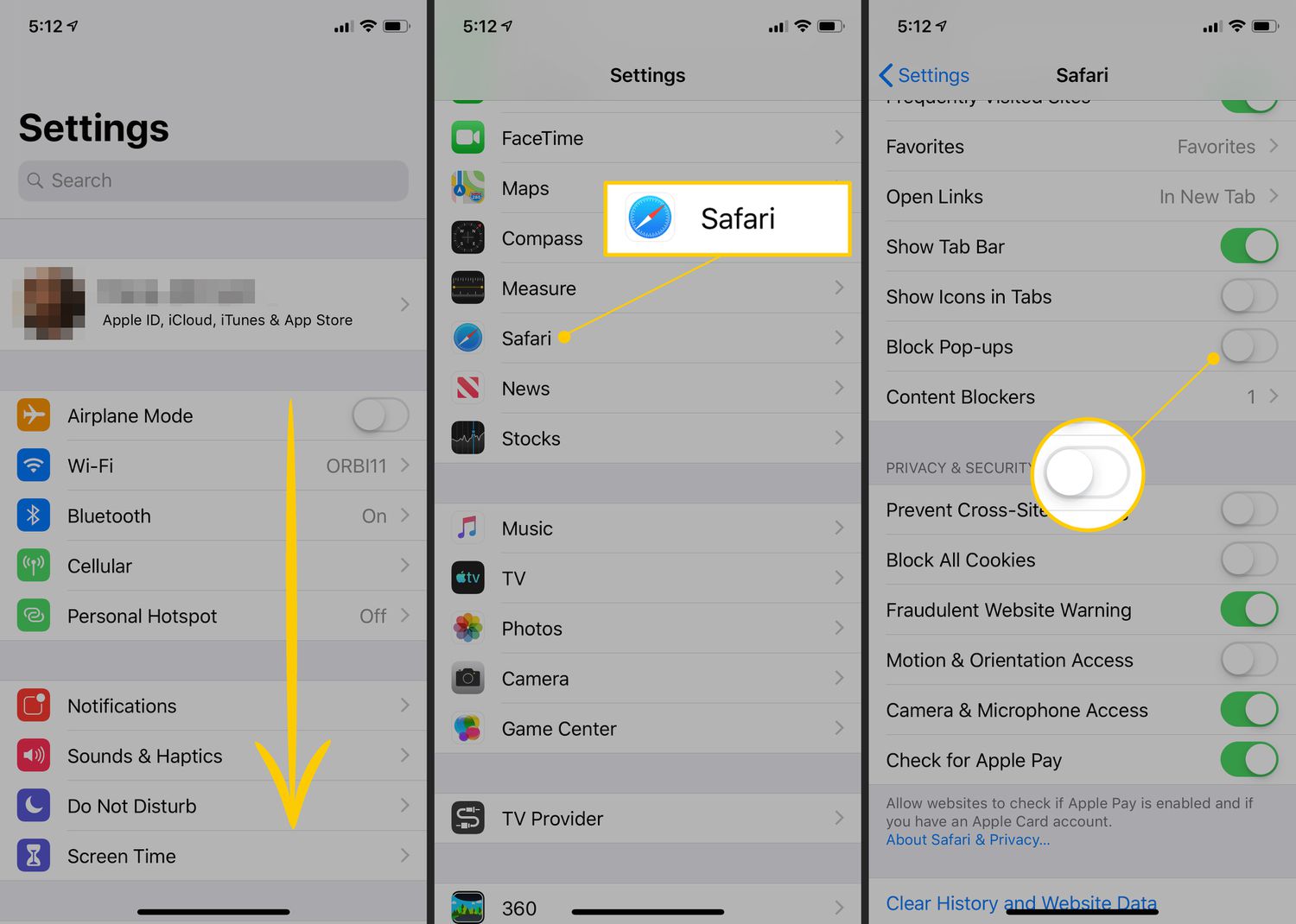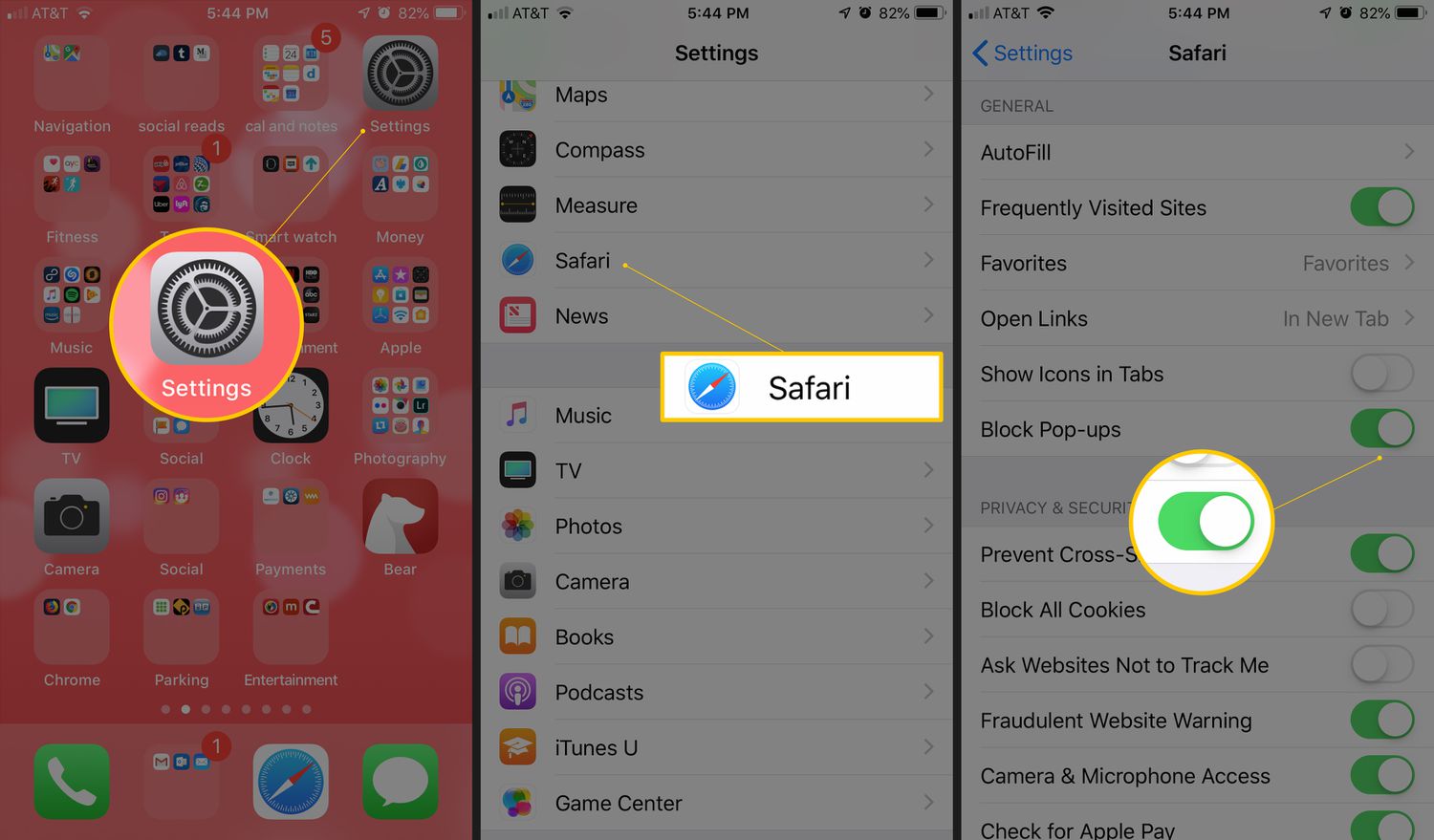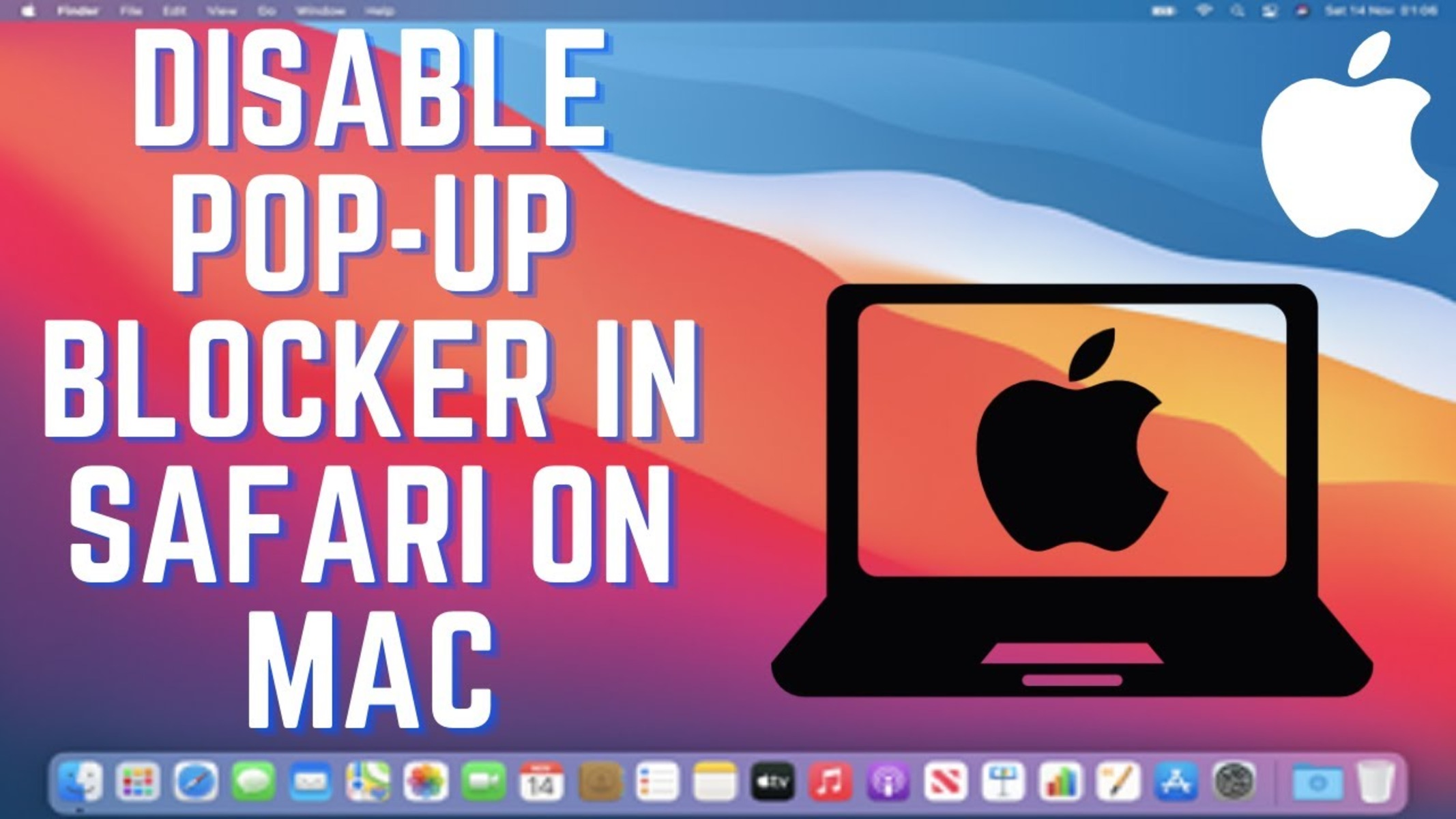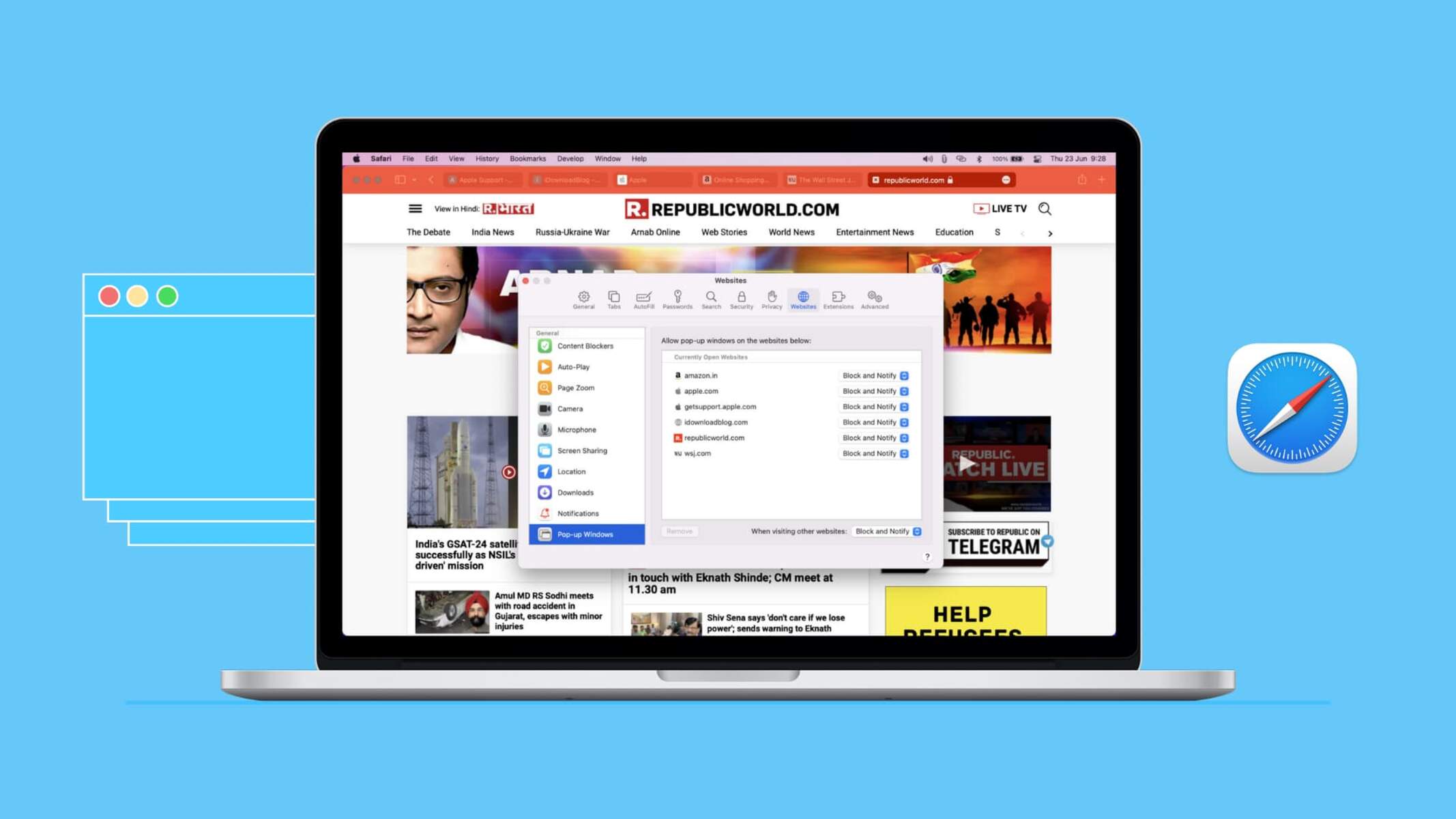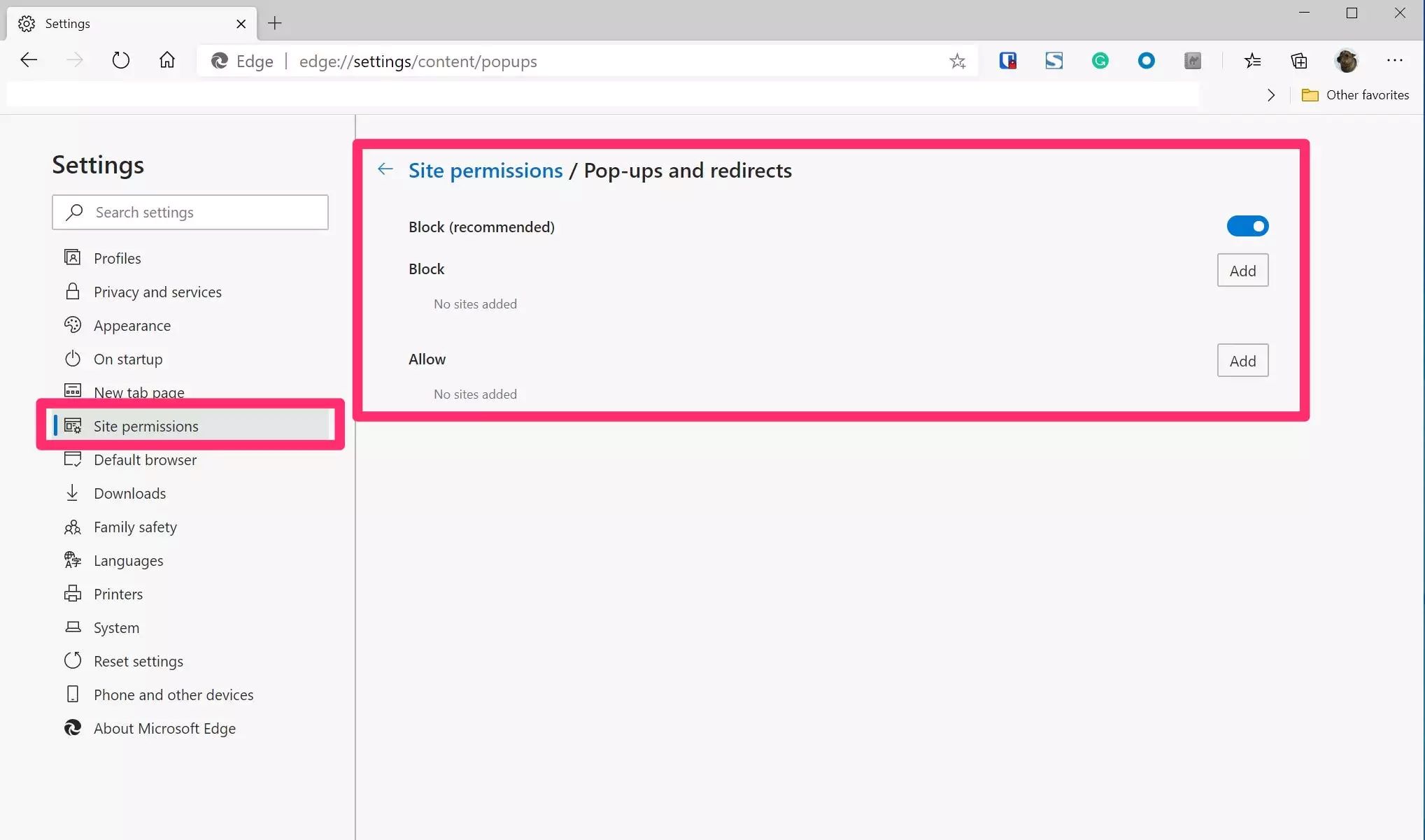Introduction
Pop-up windows have been a subject of contention in the browsing world for quite some time. While they can be annoying and disruptive, there are instances where enabling pop-ups is necessary to access certain content or features on websites. Safari, the default web browser for Apple devices, provides users with the flexibility to manage pop-ups according to their preferences.
In this guide, we will walk you through the process of enabling pop-ups on Safari, whether it's for specific websites or for all websites. By following these steps, you can customize your browsing experience and ensure that you don't miss out on important information or functionality that may be presented in pop-up windows.
So, whether you're encountering issues with accessing essential content due to pop-up restrictions or simply want to have more control over your browsing experience, this guide will equip you with the knowledge to manage pop-ups effectively on Safari. Let's dive into the step-by-step process to enable pop-ups and make the most out of your browsing sessions.
Step 1: Open Safari Preferences
To begin the process of enabling pop-ups on Safari, you first need to access the browser's preferences. This allows you to customize various settings, including those related to pop-up windows. Here's a detailed walkthrough of how to open Safari Preferences:
-
Launch Safari: Start by opening the Safari browser on your Mac or iOS device. The Safari icon can typically be found in the dock or the Applications folder on a Mac, or on the home screen of an iOS device.
-
Access Preferences: Once Safari is open, navigate to the top-left corner of the screen on a Mac or the bottom-right corner on an iOS device to locate the "Safari" menu. Click on "Safari" to reveal a drop-down menu, and then select "Preferences" from the options listed. Alternatively, you can use the keyboard shortcut "Command + ," on a Mac to directly access the Preferences window.
-
Explore Preferences: Upon selecting "Preferences," a new window will appear, presenting a range of customizable settings for Safari. This is where you can modify various aspects of the browser's behavior, including security, privacy, and website settings.
By following these steps, you will successfully open the Safari Preferences window, laying the groundwork for the subsequent actions required to enable pop-ups. With the Preferences window now accessible, you are ready to proceed to the next steps in the process of managing pop-ups on Safari.
This initial step sets the stage for the subsequent actions, allowing you to delve into the specific settings that govern pop-up behavior on Safari. With the Preferences window at your disposal, you are empowered to tailor the browsing experience to your preferences, ensuring that pop-ups are managed in a manner that aligns with your needs and browsing habits.
Step 2: Go to Security Settings
Once you have accessed the Safari Preferences window, the next crucial step in enabling pop-ups involves navigating to the security settings. This is where you can fine-tune the browser's behavior regarding pop-up windows and ensure that your browsing experience aligns with your preferences and security considerations.
Here's a detailed guide on how to proceed to the security settings within Safari Preferences:
-
Select the "Security" Tab: Within the Safari Preferences window, you will notice a series of tabs at the top of the window, such as "General," "AutoFill," "Passwords," and more. Locate and click on the "Security" tab to access the security settings for the browser.
-
Explore Security Preferences: Upon selecting the "Security" tab, you will be presented with a range of security-related options and settings that pertain to your browsing experience. These settings encompass various aspects of web security, including website permissions, fraudulent website warnings, and plug-in management.
-
Focus on Pop-Up Windows: Within the Security preferences, you will find specific options related to pop-up windows. This is where you can customize the behavior of pop-ups according to your preferences. Look for settings that allow you to manage pop-ups, such as enabling them for specific websites or configuring Safari to block or allow all pop-ups.
-
Review Additional Security Features: While in the Security preferences, take the opportunity to review other security features offered by Safari. This may include settings related to website permissions, content blockers, and privacy considerations. By familiarizing yourself with these features, you can enhance your overall browsing security and tailor the browser to meet your specific needs.
By navigating to the security settings within Safari Preferences, you gain access to a suite of options that enable you to manage pop-ups and enhance the security of your browsing experience. This step is pivotal in customizing Safari to align with your preferences and ensuring that pop-ups are handled in a manner that suits your browsing habits and security requirements.
With the security settings now within reach, you are well-positioned to proceed to the subsequent steps, where you can further refine the management of pop-ups on Safari, ultimately optimizing your browsing experience.
Step 3: Allow Pop-Ups for Specific Websites
Enabling pop-ups for specific websites can be advantageous when you want to ensure seamless access to essential content or features on trusted sites while maintaining strict pop-up restrictions for others. Safari provides a convenient way to grant permissions for pop-ups on a site-by-site basis, allowing you to exercise precise control over pop-up behavior. Here's a detailed exploration of the process to allow pop-ups for specific websites within Safari:
-
Navigate to Website Settings: After accessing the Security tab within Safari Preferences, look for the section that pertains to website settings. Within this area, you can manage individual website permissions, including the handling of pop-up windows.
-
Add Websites: In the website settings section, you have the option to add specific websites for which you wish to allow pop-ups. This involves specifying the website address or URL and configuring the pop-up behavior accordingly.
-
Customize Pop-Up Behavior: For each website added to the list, Safari allows you to customize the pop-up behavior. This may include options to always allow pop-ups from the specified site, block pop-ups, or configure Safari to ask for permission each time a pop-up is attempted.
-
Fine-Tune Permissions: Safari's granular approach to website permissions empowers you to fine-tune the pop-up behavior for individual sites based on your preferences and trust levels. This level of customization ensures that you can maintain a streamlined browsing experience on trusted websites while upholding stringent pop-up restrictions for others.
-
Review and Manage Existing Permissions: Additionally, within the website settings, you can review and manage existing permissions for websites, including those related to pop-ups. This allows you to revisit and modify permissions as needed, ensuring that your browsing experience remains tailored to your evolving preferences.
By allowing pop-ups for specific websites, you can strike a balance between accessibility and security, ensuring that trusted sites can utilize pop-ups for legitimate purposes while mitigating the intrusion of unwanted pop-ups on other sites. This targeted approach to managing pop-ups reflects Safari's commitment to providing users with the tools to personalize their browsing experience according to their unique needs and preferences.
With the ability to allow pop-ups for specific websites, you can navigate the web with confidence, knowing that essential pop-up content on trusted sites is readily accessible while maintaining a secure and controlled environment for browsing. This level of control over pop-up behavior exemplifies Safari's dedication to empowering users with the flexibility to tailor their browsing experience to align with their individual preferences and security considerations.
Step 4: Enable Pop-Ups for All Websites
Enabling pop-ups for all websites in Safari involves configuring the browser to allow pop-up windows across the board, regardless of the site being accessed. While this approach may lead to a more permissive browsing experience, it can be beneficial in certain scenarios where you prefer to have unrestricted access to pop-up content without the need to manage individual site permissions. Here's a comprehensive guide on how to enable pop-ups for all websites within Safari:
-
Access Global Pop-Up Settings: After navigating to the Security tab within Safari Preferences, look for the section that governs global pop-up settings. This is where you can configure Safari to allow pop-ups for all websites, overriding individual site-specific permissions.
-
Enable Pop-Ups: Within the global pop-up settings, you will find an option to enable pop-ups for all websites. This setting, when activated, ensures that Safari does not block any pop-up windows, providing a more permissive approach to handling pop-up content across the web.
-
Considerations for Permissive Settings: It's important to consider the implications of enabling pop-ups for all websites. While this setting may offer convenience in accessing pop-up content without individual site management, it also increases the exposure to potentially intrusive or unwanted pop-ups on certain sites.
-
Enhanced Browsing Flexibility: By enabling pop-ups for all websites, you gain enhanced browsing flexibility, allowing you to interact with a wide range of web content that may utilize pop-up windows for various purposes, such as notifications, forms, or multimedia presentations.
-
Balancing Accessibility and Security: When opting to enable pop-ups for all websites, it's essential to strike a balance between accessibility and security. While this setting provides broader access to pop-up content, it's crucial to remain vigilant and exercise caution when encountering pop-ups on unfamiliar or untrusted sites.
-
Review and Adjust Settings: Safari's commitment to user empowerment extends to the ability to review and adjust settings at any time. If the decision to enable pop-ups for all websites needs to be revisited, Safari's preferences allow for seamless modification of global pop-up settings to align with evolving browsing preferences and security considerations.
Enabling pop-ups for all websites in Safari presents a more permissive approach to managing pop-up content, offering convenience in accessing a wide range of web-based pop-up features without the need for individual site-specific permissions. However, it's essential to approach this setting with a mindful balance between accessibility and security, ensuring a seamless browsing experience while remaining vigilant against potential risks associated with unrestricted pop-up access.
Conclusion
In conclusion, the ability to manage pop-ups on Safari empowers users to tailor their browsing experience according to their preferences and security considerations. By following the step-by-step process outlined in this guide, you can effectively enable pop-ups for specific websites or across all websites, striking a balance between accessibility and security.
Safari's granular approach to pop-up management, which allows for site-specific permissions and global settings, reflects the browser's commitment to providing users with the tools to personalize their browsing experience. Whether it's granting permissions for essential pop-up content on trusted sites or opting for a more permissive approach by enabling pop-ups across the board, Safari offers the flexibility to accommodate diverse browsing needs.
It's important to approach pop-up management with a mindful balance, considering the potential benefits of accessing essential pop-up content while remaining vigilant against intrusive or unwanted pop-ups. By leveraging Safari's customizable settings, users can navigate the web with confidence, knowing that their browsing experience is tailored to align with their individual preferences and security requirements.
As technology continues to evolve, Safari remains dedicated to providing a seamless and secure browsing environment, where users have the autonomy to manage pop-ups in a manner that enhances their overall web experience. The ability to fine-tune pop-up behavior according to specific needs underscores Safari's commitment to user empowerment and personalized browsing.
Ultimately, the process of enabling pop-ups on Safari is not just about managing windows that appear on the screen; it's about empowering users to engage with web content in a way that aligns with their preferences and security considerations. By navigating Safari's preferences and security settings, users can harness the full potential of the browser while maintaining control over their browsing experience.
In essence, the ability to manage pop-ups on Safari is a testament to the browser's commitment to user-centric design and personalized browsing, ensuring that users can engage with web content in a manner that suits their individual needs and preferences.









